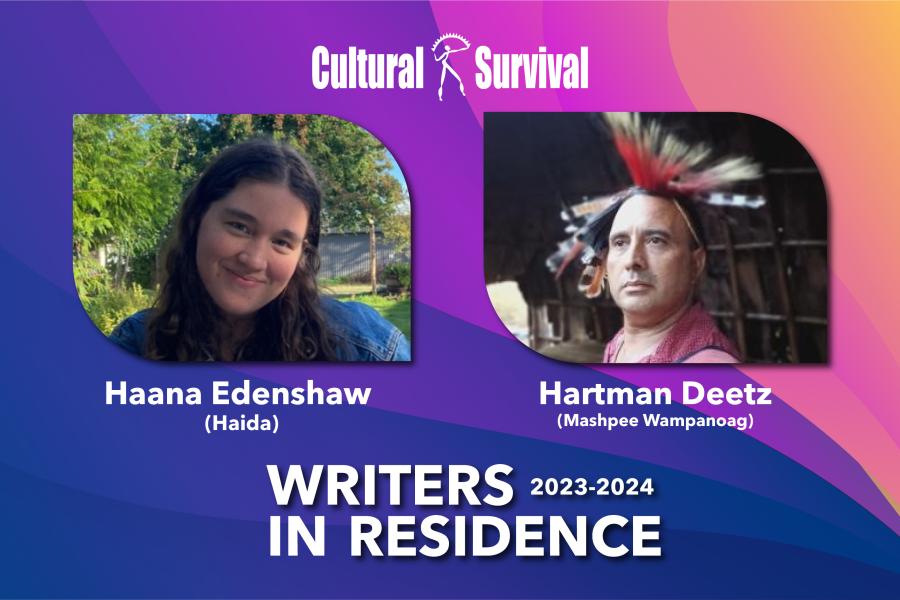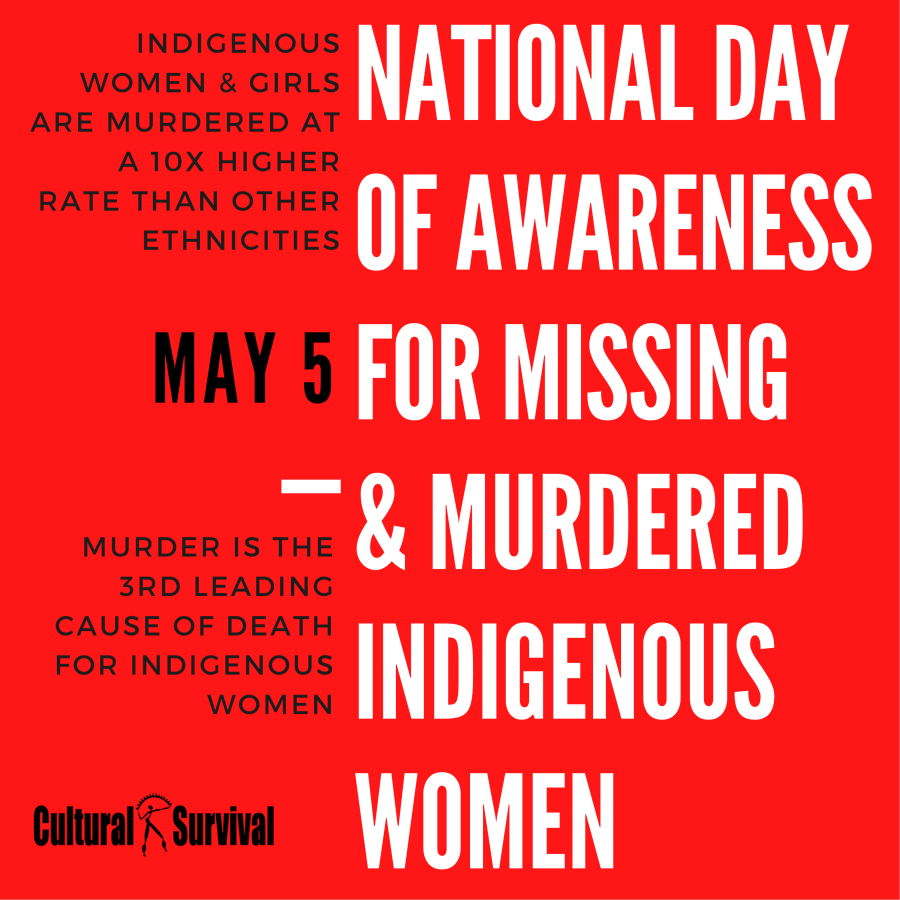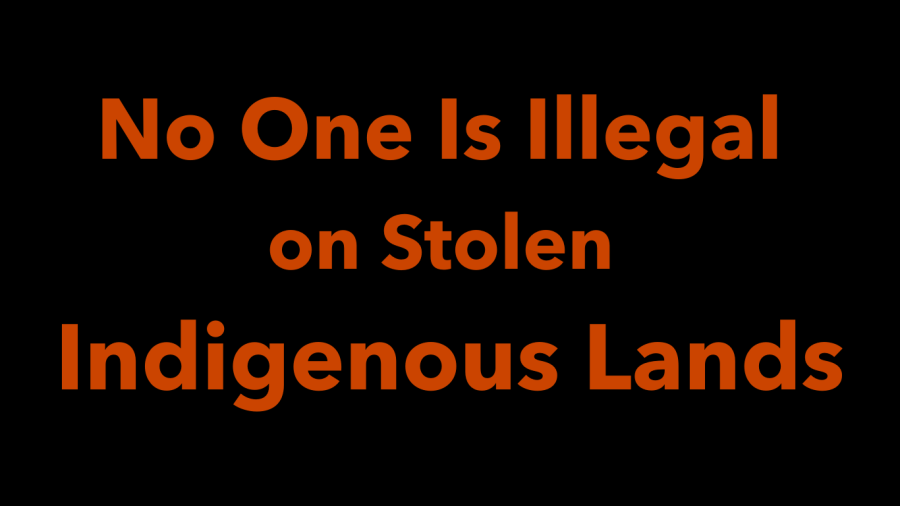Tim Coulter directs the Indian Law Resource Center. He is a lawyer and a member of the Citizen Band Potawatomi Tribe. Based in Washington, D.C., and Helena, Mont., the center provides Native Americans with free legal help in major cases involving Indian rights in the Americas. Since 1977, Coulter has also worked at the United Nations in Geneva, advocating for and helping shape a UN Declaration on the Rights of Indigenous Peoples. Robert Leavitt, director of education and public policy at Cultural Survival, interviewed Coulter.
It has been clear from the beginning of the campaign for a Declaration of Indigenous Rights that human rights involve group rights, not just individual rights. Many people are coming to realize that the rights we value most, the values that we cherish most, are realized only as part of a community. The rights to culture, religious practice, and freedom of expression presuppose the existence of a polity. The right to self-determination has always been a group right: the individual has no clear right to self-determination that can be exercised without a collectivity, a people, a polity.
This recognition is an historic step forward in the human-rights movement. It is right up there with the abolition of slavery and the recognition of the equality of women. These things seem self-evident once they are done. The idea of group rights will be one of those advances in human history that will be essentially irreversible, because the existence of social collectivities as social and political entities seems to be fundamental to human nature.
So I think we will see a gradual evolution of international law to protect indigenous peoples from the nation states. Defining who is indigenous could be a very difficult issue, but it may not really matter. There are many situations in which we know well who is indigenous: Indian nations in the United States, Indians in Central and South America, Natives in Alaska and Hawaii. Some peoples' identity, background, and status will not be clearly recognized as indigenous, but those may be a small part of the total.
It will also probably turn out that these kinds of rights for indigenous peoples are rights that ought to be enjoyed and respected with regard to all peoples. Those rights and standards will ultimately come to aid other communities or collectivities, whether or not they are indigenous.
I said 10 or 15 years ago that small self-governing social and political units like Indian nations or tribes may be a more socially-valued means of carrying on our lives. I think most people felt then, "How quaint, back to the blankets, the buffalo will return." They saw this as a romantic but futile hankering for the past. Well, in light of the events in Eastern Europe, maybe I was right. People thought the Baltic states were lost forever, so we should forget about them. But they were not lost.
It is the same thing that is said to Indian peoples: "Your societies were swallowed up and absorbed into larger, better societies long ago, so forget it. Have your cultural day once or twice a year and sing your songs, but stop this silliness." Well, people don't think it is that silly now. We see that people in Eastern Europe were prepared to do some very noble things - and some very ignoble things - to defend and advance the interests of their peoples, their sub-state collectivities. We were more right than wrong to suggest groups like Indian nations and tribes might be the kinds of social and political entities that would be most relevant to the needs of the future.
Of course, there are always chances for conflict between the rights of groups and the rights of individuals, just as there is a problem that the freedom of expression includes the right to advocate race-hatred. But we can't do anything about that other than try to find a reconciliation that preserves the values we are seeking and set up procedures we think are fair when conflicts arise.
BUILDING A CAMPAIGN
The campaign for the Declaration on the Rights of Indigenous Peoples is already one of the leading human-rights issues at the United Nations, and UN personnel are well-informed and active in it. Human-rights NGOs all over the world are also very much engaged with it. It is one of the leading elements of the human-rights movement. This came about because of the active participation of indigenous people, in the flesh, in Geneva, home of the UN Commission on Human Rights. The commission initiated the Working Group on Indigenous Populations in 1982, and the group meets every summer to take testimony on the status of indigenous peoples around the world.
There is also interest in this effort because it is groundbreaking, a real advancement that is something other than trying to extend rights to ever more kinds of individuals or sectors. We have focused on the rights of children, women, national minorities, and other important groups in trying to elaborate rights for ever more kinds of individuals. While that is very important, it isn't as interesting as advancing human rights in a way that relates to all major population groups. And it isn't as interesting as the substantive advance in thinking and analysis that is involved in elaborating and protecting group rights.
Keep in mind, though, that we are still only at the stage of drafting a Declaration of Indigenous Rights. After that is agreed upon - we hope by the UN General Assembly - work will begin on a binding instrument on the rights of indigenous peoples that will not only lay down substantive provisions of law, but will also include measures to recognize and protect these rights. Such a treaty or convention would create committees or bodies to monitor the observance of the convention, consider grievances, do educational work, and so on. At this point, we are just trying to finish the declaration and get it adopted. Until we see the final version of the draft declaration, it is premature to get very far down the road on the convention.
The question for now is how long will it take to get consensus on a declaration among the members of the General Assembly? This involves four levels of the UN machinery: first, the Sub-Commission on the Prevention of Discrimination and Protection of Minorities, the Commission on Human Rights, then the Economic and Social Council, and finally the General Assembly. Most observers expect the Sub-Commission to adopt the document next year.
The timing with the Columbus quincentennary is somewhat coincidental. Keep in mind that this process has been going on since 1977. The working group began in 1982, and we have marched forward pretty relentlessly since then. Almost never was there any particular thought to complete it in 1992. As it turns out, we may come close, and it is fortunate that we have come this far at this time, because some additional attention is being paid to indigenous peoples' issues during the quincentennary.
However, an awful lot of the world's indigenous peoples aren't from the Americas, so the quincentennary is nearly irrelevant to them. Next year is the International Year of the World's Indigenous People and that will help to give this issue more interest.
WORTH PROTECTING
Still, the work at the United Nations has been to some extent the easy part. The much more difficult task of persuading governments to adopt or accept these documents requires real organizing and public education. In the United States, it requires enlisting people to engage in discussions with members of Congress, the administration, and other financial groups.
The United States has not had a great position at the United Nations. it is having difficulty with recognizing anything. Ironically, most of what is in the draft UN declaration is accepted in the laws of the United States so it's a pity that the United States hasn't been more involved.
The Declaration on the Rights of Indigenous Peoples needs to be a very important priority for governments. We need to have a lot of popular support - worldwide, popular support - to persuade governments to accept this declaration. For example, we need to get busy dealing with the Congress of the United States to hold hearings on the declaration. We need conferences and symposia. We should use the very best, most coveted art of indigenous peoples to create posers and other works of art that include educational messages.
Most important, I think we need to help indigenous peoples take their culture, language, and arts to the world. One thing we have learned is that when people see that indigenous ways of life exist, when they see that indigenous art and culture and language and religion exist, it is possible to understand that they are worth valuing and saving, worth protecting and respecting. If you don't see indigenous people, if you just hear in the abstract that they should have rights, it is no wonder that this doesn't seem terribly important. Most people feel very differently about indigenous rights when they can actually eat Indian food or know something about Indian knowledge of the use of plants, about indigenous peoples' stories, cosmology, philosophy, religion.
When these things are felt and seen and known, people can understand that these are the richest things people produce. It is not just indigenous people: these are the great things about all human life that are worth preserving. These are the things that make up for all the destruction and pain and suffering in the world, and these are the reasons why we should fight for laws that will protect and enhance these things that we value so much.
THE DECLARATION ON THE RIGHTS OF INDIGENOUS PEOPLES (EXCERPTS)
Indigenous Peoples have the right to self-determination, in accordance with international law. By virtue of this right, they freely determine their relationship with the States in which they live, in a spirit of coexistence with other citizens, and freely pursue their economic, social, cultural and spiritual development in conditions of freedom and dignity…
Indigenous peoples have the right to the full and effective enjoyment of all of the human rights and fundamental freedoms which are recognized in the Charter of the United nations and other international human rights instruments…
Indigenous peoples have the right to be free and equal to all other human beings and peoples in dignity and rights, and to be free from adverse distinction or discrimination of any kind based on their indigenous identity.…
Indigenous peoples have the collective right to exist in peace and security as distinct peoples and to be protected against genocide, as well as the individual rights to life, physical and mental integrity, liberty and security of person.…
Indigenous peoples have the collective and individual right to maintain and develop their distinct ethnic and cultural characteristics and identities, including the right to self-identification.
Indigenous peoples have the collective and individual right to be protected from cultural genocide, including the prevention and redress for:
(a) any act which has the aim or effect of depriving them of their integrity as distinct societies, or of their cultural or ethnic characteristics or identities;
(b) any form of forced assimilation or integration;
(c) dispossession of their lands, territories or resources;
(d) imposition of other cultures or ways of life; and
(e) any propaganda directed against them.…
Projects for the Future
Country: United States Organization: Menominee Sustainable Forestry
The Menominee reservation consists of 10 townships located on 230,000 acres, of which 220,000 are forested. The forest contains 11 of the vegetation types found in Wisconsin, and four have market potential: northern hardwood, hemlock hardwood, white pine, and pulpwood.
Logging on the land started in the 1930s based on a combination of clear-cutting and fire, but the lack of regeneration prompted shift to selective cutting. The Menominee sued the federal government for mismanaging their forested lands, and in 1951 received a court settlement of $8.5 million.
In the early 1950s, Menominee Enterprises was formed to implement a program of intensive forest, as opposed to timber, management. Silvicultural procedures have been revised and refined continuously since then, and the Menominee system is now a recognized leader in shelterwood systems for uneven-aged management of white pine, hemlock, and hemlock-yellow birch ecosystems. The entire area has been inventoried three times as the basis for a management plan that utilizes state-of-the-art computerized systems and provides for a 15-year cutting cycle, plus the continual salvage of dead and dying trees. End-products include sawlogs and pulpwood.
Menominee representatives are also involved in deliberations over the potential for certifying when wood from tropical forests is produced in sustainably. These ongoing talks among forest communities, timber buyers, and development agencies aim to arrive at a certification process that enables producers committed to sustainable forestry to market their wood and closes markets to timber produced by non-sustainable practices. Menominee Tribal Enterprises is the first wood producer in North America to qualify for wood certification.
Address: Dave Bubser, Forest Development Forester, Menominee Tribal Enterprises, Forestry Center, P.O. Box 580, Keshena, WI 54135.
Article copyright Cultural Survival, Inc.



